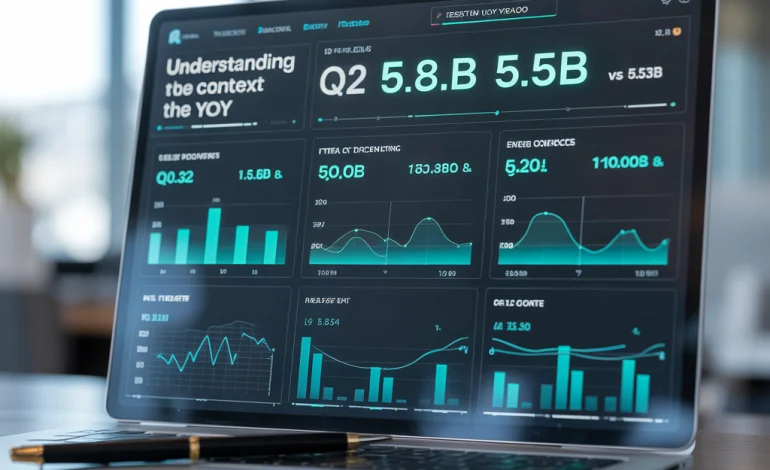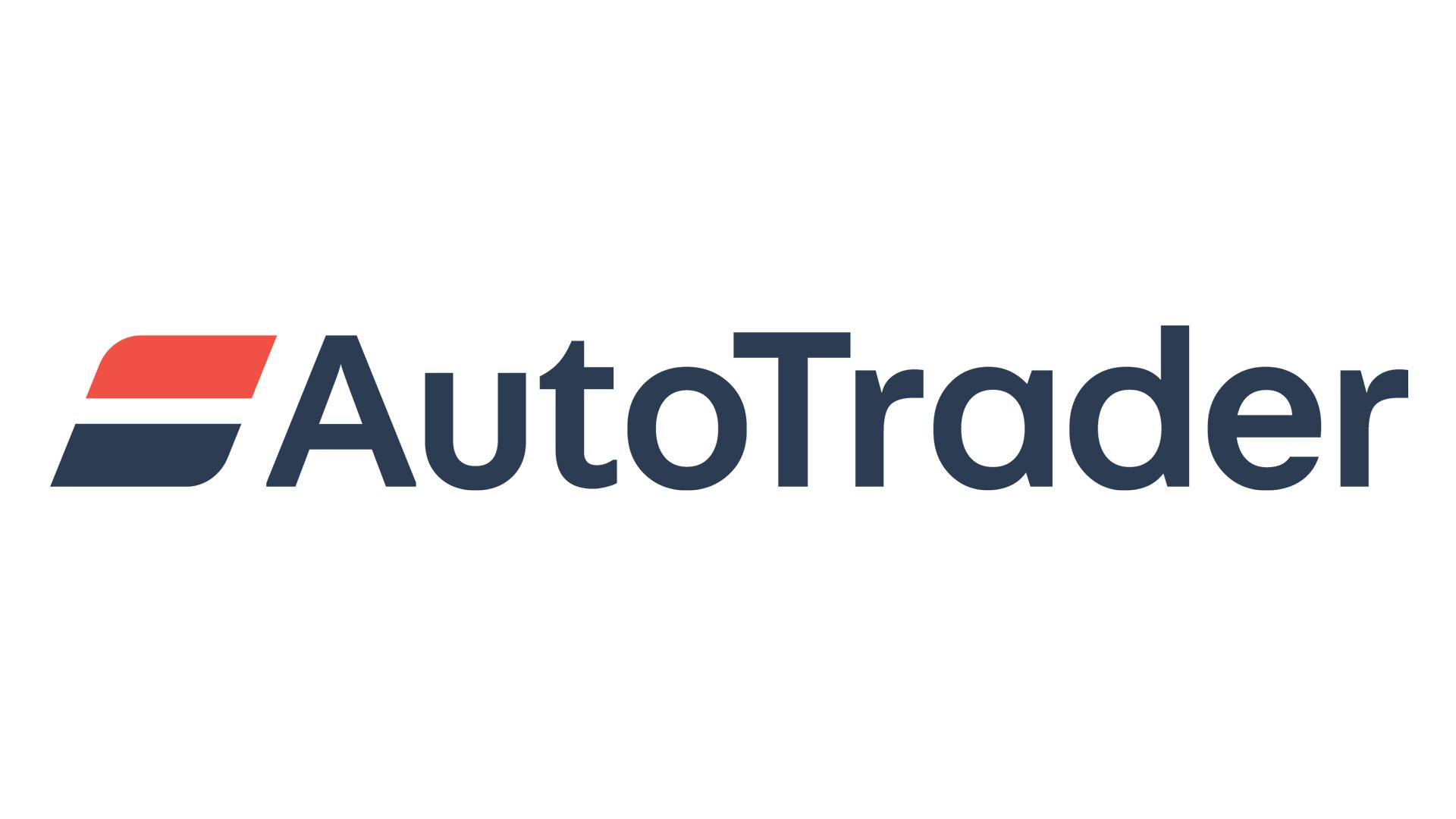Q2 YoY 5.82B vs 5.53B: Analyzing the Financial Growth

The financial term “Q2 YoY 5.82B vs 5.53B” refers to a year-over-year (YoY) comparison of quarterly earnings, specifically for the second quarter (Q2) of two consecutive years. In this case, a company or institution reported $5.82 billion in Q2 of the current year, compared to $5.53 billion in Q2 of the previous year. This indicates a positive growth trend, reflecting either higher revenue, improved margins, or both.
Such figures are pivotal in evaluating a company’s financial health, market performance, and strategic direction. Analysts, investors, and stakeholders rely heavily on these quarterly comparisons to make informed decisions.
Breaking Down the Numbers: Q2 YoY 5.82B vs 5.53B
Let’s look at the raw data:
- Q2 Current Year Revenue: $5.82 billion
- Q2 Previous Year Revenue: $5.53 billion
- YoY Growth: $0.29 billion (approx. 5.24% increase)
This growth, although not enormous, is significant in stable or mature industries. A 5%+ year-over-year rise typically signals positive operational performance, improved market reach, or successful cost management.
Key Drivers Behind Q2 YoY 5.82B vs 5.53B Growth
To understand what fueled the growth, we need to consider common business drivers that may have contributed:
1. Product Expansion or Innovation
If the company launched a new product or service in the past year, it could have attracted new customers or increased market share. Product innovations often result in increased sales and therefore higher quarterly revenues.
2. Geographic Market Expansion
Entering new markets or expanding in underdeveloped regions can lead to additional revenue streams. If the company went international or deepened penetration in domestic areas, this could explain the rise from $5.53B to $5.82B.
3. Improved Operational Efficiency
Cost control and lean operations can boost profitability, even if revenues remain flat. However, since we’re seeing revenue growth in Q2 YoY 5.82B vs 5.53B, the company likely also saw increased sales.
4. Strategic Mergers or Acquisitions
Acquisitions often bring in new revenue sources. If the company made a strategic acquisition post-Q2 of last year, the additional revenue might now be reflected in the current year’s Q2 performance.
Comparing to Industry Averages: Why Q2 YoY 5.82B vs 5.53B Stands Out
When benchmarking financials, context matters. A 5.24% increase might be underwhelming in high-growth sectors like technology but could be impressive in industries like utilities or manufacturing.
For example:
- Tech Sector YoY Q2 Growth Average: Often exceeds 10–15%
- Healthcare Sector: Typically 3–6%
- Manufacturing: A healthy 5% is a positive sign
If the company behind Q2 YoY 5.82B vs 5.53B belongs to a mature industry, this growth may signal strategic excellence and efficient management.
Stock Market Reaction to Q2 YoY 5.82B vs 5.53B
Investors pay close attention to quarterly earnings reports. In this case, the positive Q2 YoY growth of $0.29B could result in:
- Positive stock movement if the reported figure exceeds analyst expectations
- Neutral or negative movement if the market was expecting even higher revenue
Investor sentiment is often influenced not just by absolute numbers, but by expectations vs. reality. If Wall Street anticipated only $5.6B, then $5.82B would be a bullish signal.
Profitability vs. Revenue: Beyond Q2 YoY 5.82B vs 5.53B
While revenue is crucial, profitability is equally important. A company might increase its revenues while also increasing costs, leading to flat or reduced profits.
Key profitability metrics to consider in conjunction with the revenue growth:
- Net Profit Margin
- Operating Income
- Earnings Per Share (EPS)
- Free Cash Flow (FCF)
If the jump from 5.53B to 5.82B came with improved margins, it shows not just top-line growth, but also bottom-line improvement.
Potential Risks Masked by Q2 YoY 5.82B vs 5.53B Figures
Sometimes, headline figures don’t tell the whole story. Here are risks that could be hidden:
1. Currency Fluctuations
If the company operates globally, favorable exchange rates could boost revenue in USD without actual sales increases.
2. Temporary Revenue Boosts
One-off deals or short-term contracts may inflate the numbers without being sustainable.
3. Deferred Revenues
Accounting practices like recognizing deferred revenue could push numbers from one quarter to another, making growth seem larger than it truly is.
4. High Customer Acquisition Costs
If the revenue growth came at the cost of unsustainable marketing or incentive strategies, it may not indicate long-term health.
How Analysts Interpret Q2 YoY 5.82B vs 5.53B
Financial analysts will dissect the following elements alongside the revenue figures:
- Guidance for future quarters: Is management confident?
- Customer growth and churn rate
- Operating expenses and capital expenditures
- Market trends and competitive dynamics
For instance, if this growth came despite inflation or economic downturns, analysts would view it favorably.
What Q2 YoY 5.82B vs 5.53B Means for Investors
For investors, the key takeaways are:
- Steady Growth: A 5.24% YoY growth is a healthy indicator of business performance.
- Signal to Hold or Buy: Depending on other financials, this could indicate an opportunity.
- Long-Term Viability: Consistent YoY growth is one of the strongest indicators of a reliable business model.
If the company continues to post steady gains like Q2 YoY 5.82B vs 5.53B, investors may view it as a stable investment with modest growth potential.
Q2 YoY 5.82B vs 5.53B in Broader Economic Context
Macroeconomic factors can influence these numbers. In 2025, companies face challenges such as:
- Persistent inflation
- Global supply chain constraints
- Geopolitical instability
- Interest rate hikes
Despite these hurdles, a company achieving nearly 6% YoY growth shows resilience and adaptability, which is commendable.
Conclusion:
The phrase “Q2 YoY 5.82B vs 5.53B” encapsulates more than just a set of numbers — it reflects a company’s journey over 12 months. Whether it’s through innovation, expansion, or operational discipline, the growth from $5.53 billion to $5.82 billion marks a meaningful achievement.
However, investors and analysts should look deeper — into costs, profitability, market dynamics, and sustainability — to gauge whether such performance can be replicated or improved in future quarters.
In the fast-paced world of finance, one strong quarter is encouraging, but consistency and strategy are what ultimately define success.









